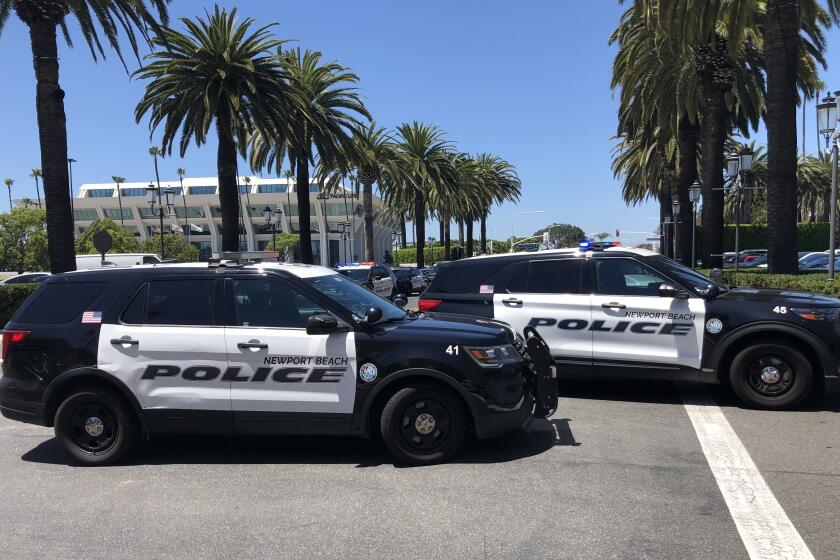The art of taking a hike: Crystal Cove offers newbies tips
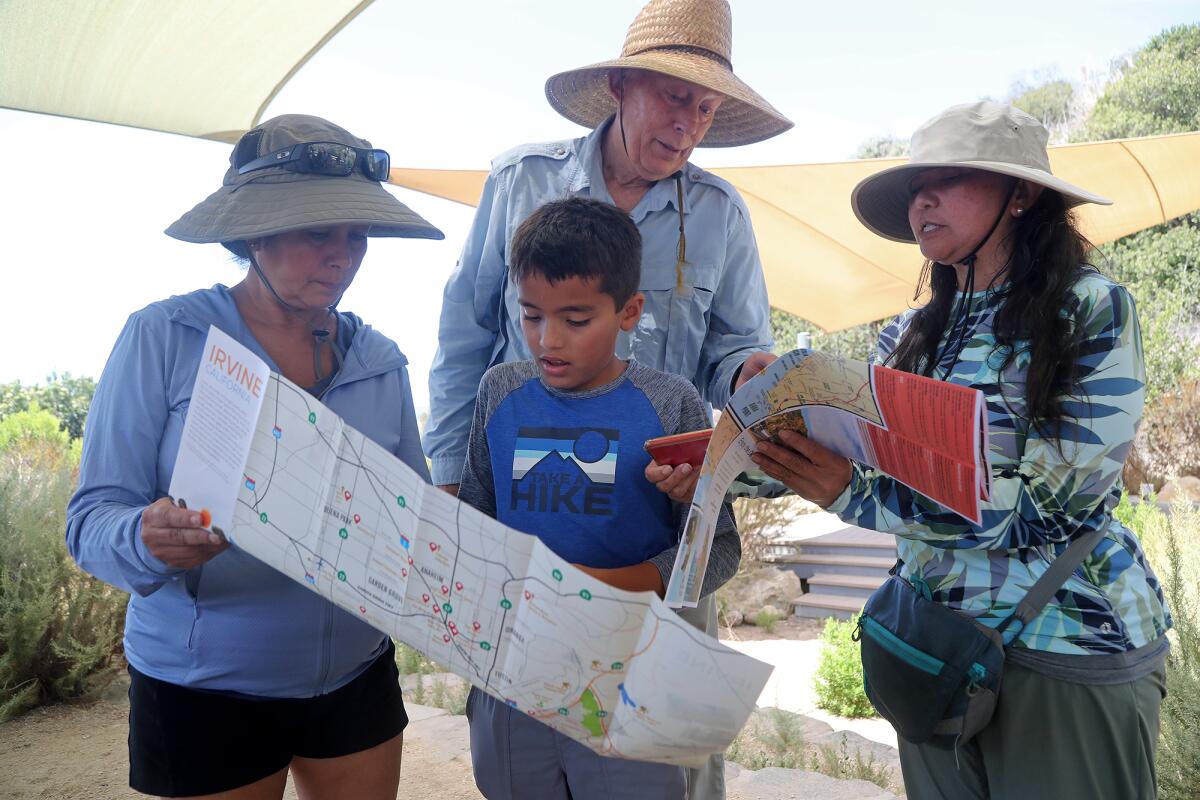
- Share via
Public parks became havens during the coronavirus pandemic, providing reprieve from the soul-crushing monotony of sheltering in place and vast acreage where people could exercise, get a dose of Vitamin D and be surrounded by the beauty of nature.
But with the steep rise in park use came some unintended consequences, according to Winter Bonnin, an interpretive naturalist at Crystal Cove State Park just north of Laguna Beach.
“One of the things we were seeing during the pandemic was many people coming to Crystal Cove Park who’d never done this before and were using the parks as their gyms,” she said. “They were also bringing their urban habits like loud music and leaving trash.”
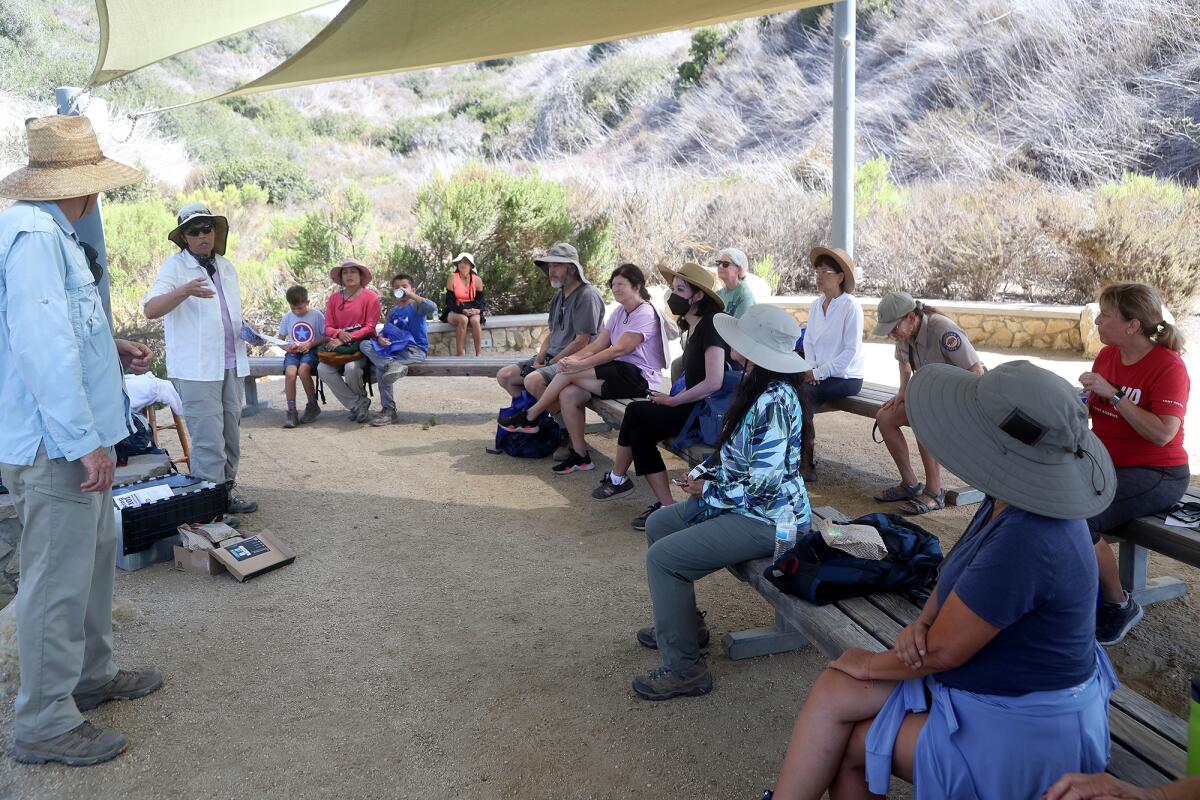
At the other end of the spectrum were people like Debra Ross, who used parklands responsibly but felt a lack of expertise kept her from taking on more advanced hiking adventures.
“I’ve been hiking with my friends without knowing right or wrong,” the Laguna Woods resident said. “I really like to hike, and I thought if I really want to do this, I need to be more serious.”
A class held Tuesday at Crystal Cove State Park — Hiking 101 — aimed to elevate visitors’ understanding of the outdoor resources available to them and how to enjoy them safely and responsibly, offering wisdom on what gear works best for different terrains and temperatures, what to put in a pack or first aid kit and other tricks of the trade.
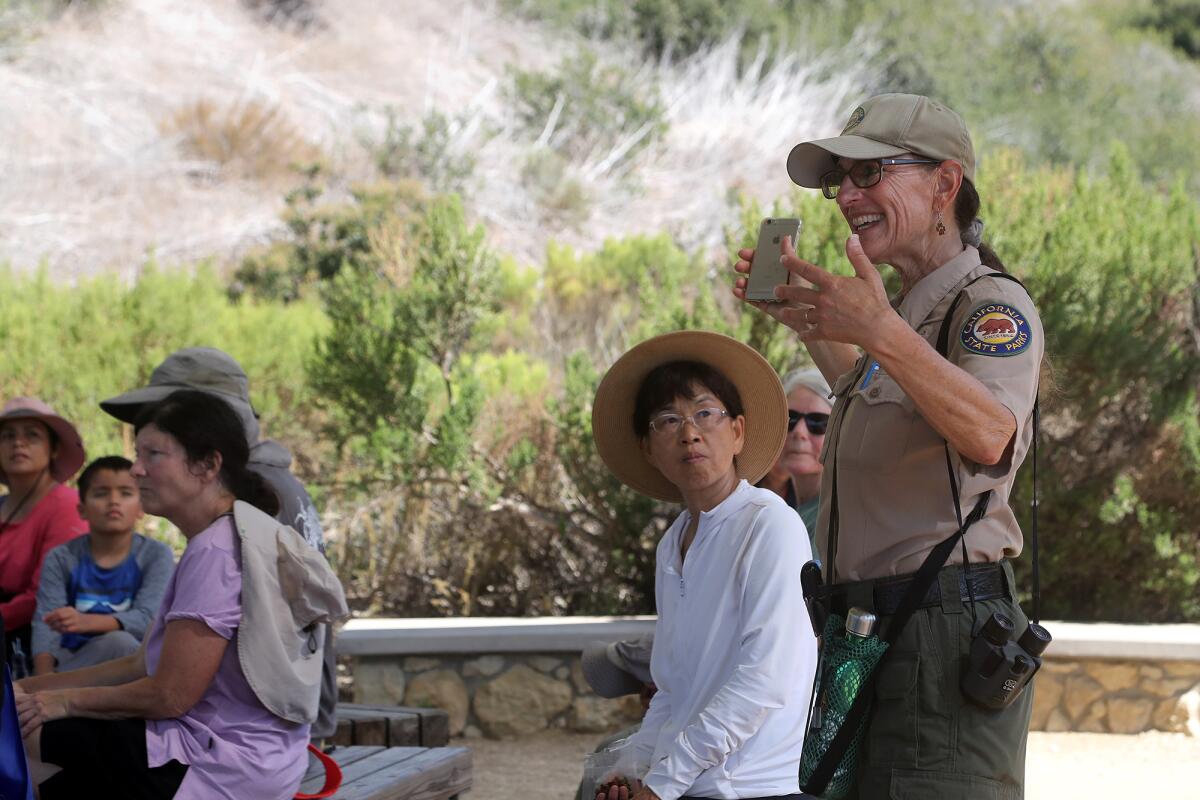
Co-hosted by California State Parks and the nonprofit Crystal Cove Conservancy, the session opened with a 3-mile trek around a loop trail led by Dana Hunter, a park volunteer who’s been hiking for decades and is happy to impart what she’s learned with others just starting out.
“A lot of people think you just go out, it’s no big deal. People go out in flip flops, they’re not bringing water,” Hunter said. “But it’s not necessarily just walking. It requires a little bit more diligence, a bit more wariness. It’s not a controlled environment — things can happen.”
After Tuesday’s warmup Hunter, accompanied by husband John, led a casual information session that covered what to wear, bring and understand before you hit the trails. A class of about 20 participants received items to add to their own packs, including granola bars, hydration powder and duct tape.
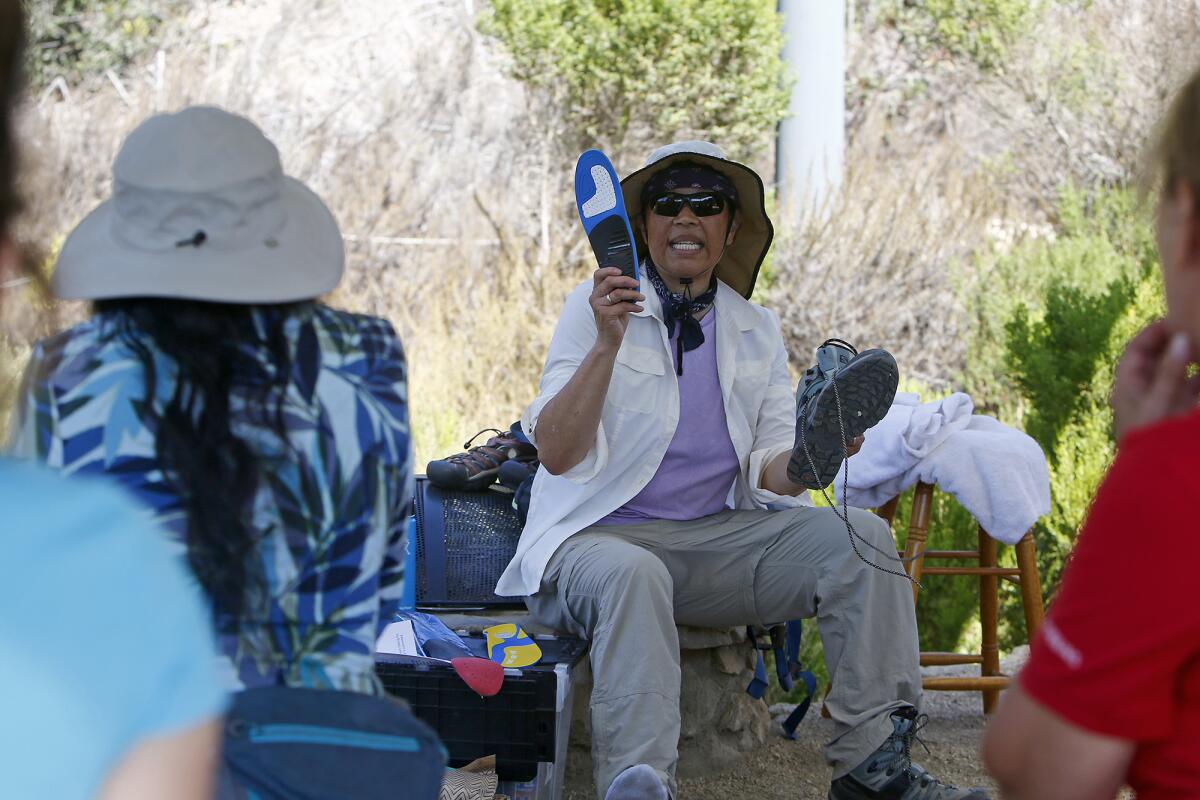
“You will find many uses for duct tape,” Hunter advised. “You can use it for first aid to immobilize somebody’s shoulder. You can use it for a blister if you don’t have moleskin.”
The husband and wife hikers demonstrated the proper lacing of a boot, how to hold and use hiking poles and measured attendees’ torsos, giving them dimensions they could use to select a right-sized backpack.
“It’s really a misnomer when they say ‘backpack’ because you want to disperse the weight onto your shoulders and waist. Backpacks should also have a waistband, because that’s where the weight is going to transfer to,” Hunter said.
“I never knew that,” Ross said to a woman sitting next to her. “I just picked it by the color.”
John Hunter showed participants how to use a compass — both the cellphone app version and the analog tool — to reorient themselves if they should become lost.
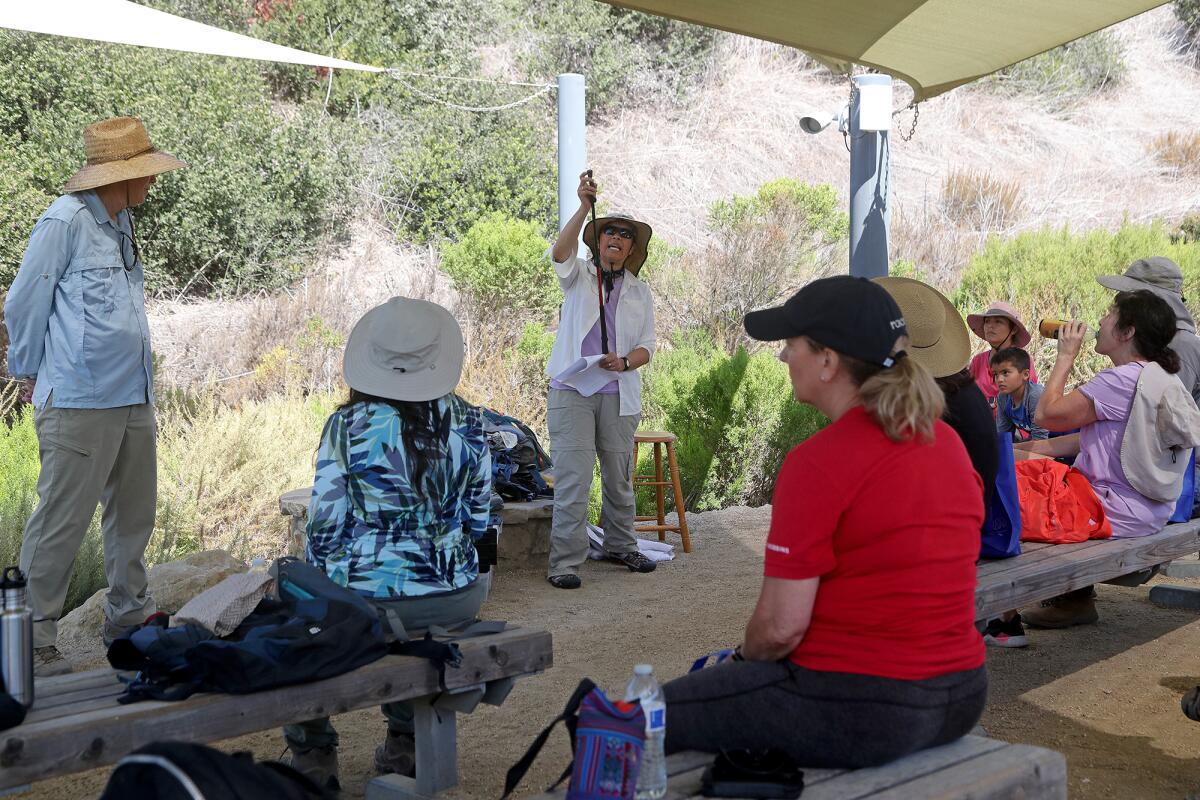
“I’ll be bold and say in Crystal Cove Park you shouldn’t get lost,” he said. “But when you’re out in the mountains or in an unfamiliar area, that’s how you do it.”
He held the device to a map of the park and asked 10-year-old Cristian Damm to locate true north. Consulting the instrument, the boy pointed to a ridgeline behind the amphitheater and received a brand-new compass for his correct answer.
Cristian’s mom, Linda Ortiz Ponce, said she brought her son and his 8-year-old brother, Emilio, from their home in Coto de Caza to learn some tips for when they walk at Crystal Cove and other Orange County parks.
“We started hiking when the pandemic started, and we did it by ourselves, so I figured this could really enhance our skills and knowledge in the outdoors,” Ortiz Ponce said after the class.
Cristian said he’d spent some time in the Cub Scouts before the pandemic and learned some basics but was happy to have picked up some new tricks in the Hiking 101 class.
“I learned about how to use the proper insoles in your shoes, so it doesn’t hurt,” he said. “And that you need to change the length of your poles when you’re walking downhill.”
For Bonnin, any little bit of knowledge that can be passed on to help visitors stay safe is worth sharing.
“The goal is to make sure people who come into our parks are well prepared and understand the land and understand what it means to be out on a trail,” she said. “I’m sure we’ll do this again.”
All the latest on Orange County from Orange County.
Get our free TimesOC newsletter.
You may occasionally receive promotional content from the Daily Pilot.







